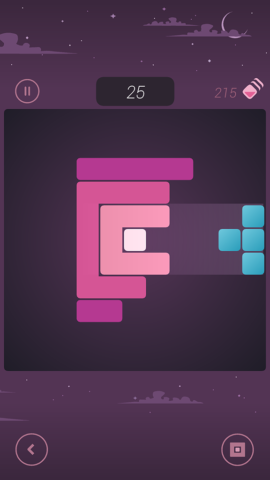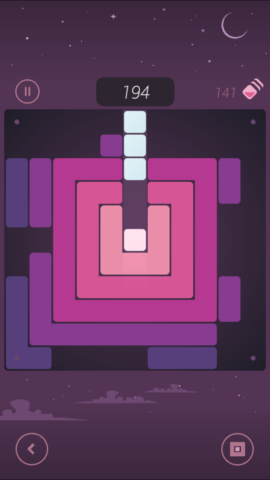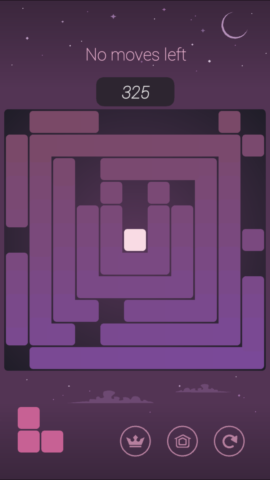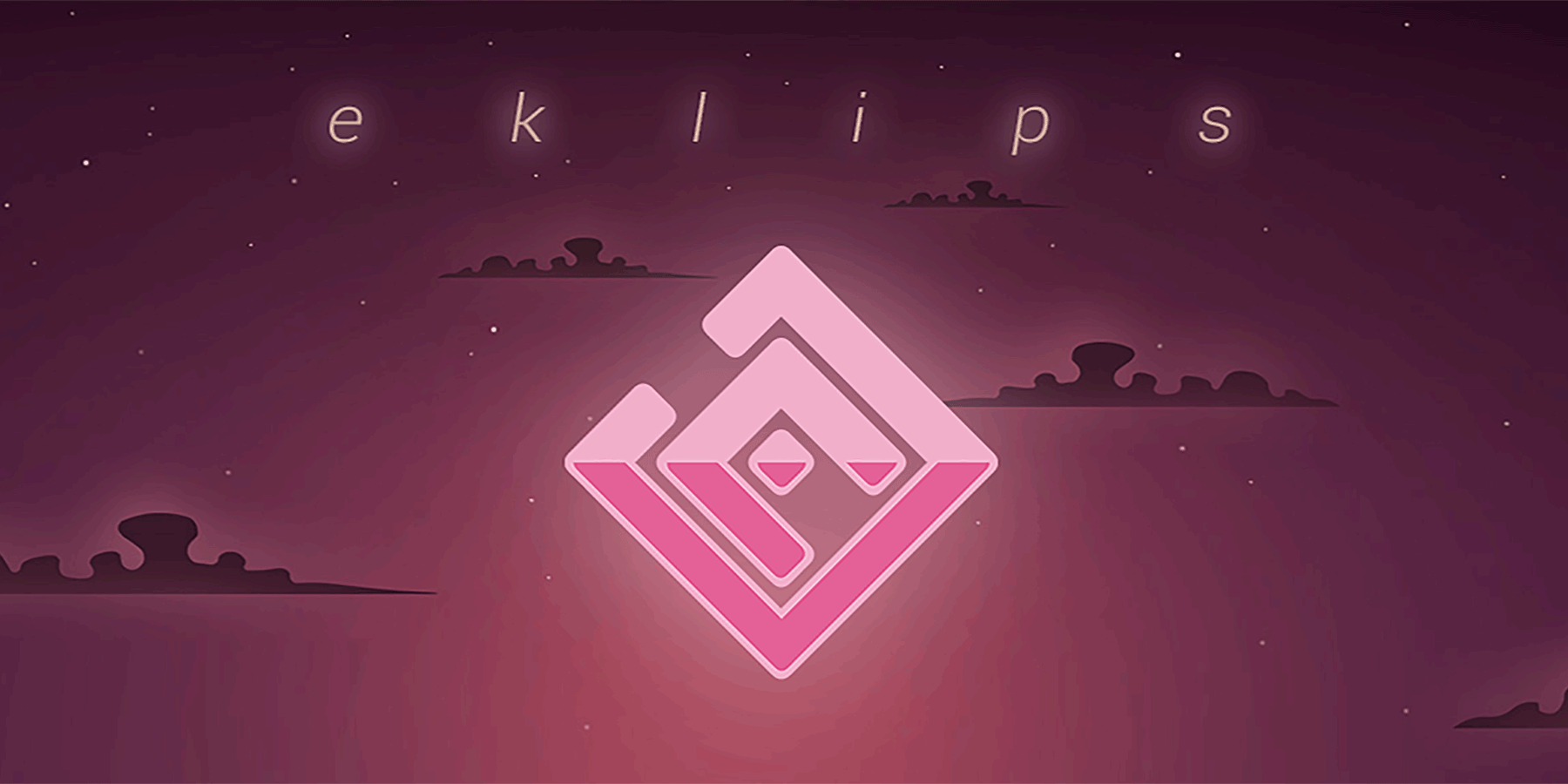A relaxing puzzler with more than a few cues taken from Tetris
Price: $1.99/£1.49
Version: 1.0
Size: 25.7 MB
Platform: iPhone and iPad
Developer: Umut Dervis
![]()
Eklips is a minimal puzzle game of block-stacking and square-building. The aim is to drop shapes towards the center of a grid to create concentric squares, which will disappear as they’re finished. Points are accrued for each shape dropped and every square completed, and the game continues until there’s no room left to drop blocks.

Drop shapes towards the center to form complete squares
Shapes appear one by one, formed of anything from one to four squares of various formations. Swiping around the perimeter of the grid moves the current piece into position, with a shadow aimed towards to center to illustrate where it will land when dropped. The pieces can’t be manually rotated, but orient themselves dependent on the edge they’re dropped from. You get one point for each shape placed, and bonuses each time a square is completed – up to 200 if you can somehow fill in the outermost ring.
When a completed square dissolves, all remaining blocks gravitate inwards towards the central white dot, often causing a gratifying chain reaction in which several squares disappear consecutively. However, this tends to leave awkward gaps which become increasingly difficult to reach. There are a few different tactical approaches to Eclips – it’s a delicate balancing act as you bide your time, waiting for the optimal time to complete a square and cash in points at the expense of shuffling the board. The random order of the shapes can feel frustratingly punishing at times – it would be nice to at least see a preview of the next piece to better plan maneuvers.

Three squares at once! Definitely the most satisfying move in the game
Concept sounding a bit familiar? It’s hard to ignore the inevitable Tetris comparisons when talking about Eklips. The similarities with the best-selling handheld game of all time are clear, and yet a few key changes – forming squares rather than lines, with pieces dropping from all sides of the grid – help ensure the gameplay has a unique feel to it. One of the appeals of Tetris is the intensity and pressure of its time limit; playing smartly at speed, as the pieces tick inevitably downwards, provides a thrill that’s lacking here. Eklips removes any requirement for quick wits, compensating with a more complex stacking process. It’s a little less compelling without the rush, but those who favor a gentler pace may prefer it this way round.
Swiping around the edges to tee up a shot is a smart mechanic, but the controls are a little oversensitive, especially around the corners of the board. More than once we accidentally dropped a block in the wrong place – thankfully there’s an undo button. Offering a choice of three block styles (adjoining, blocked and beveled) is a nice touch and generally the graphical style is pleasant, with light pinks giving way to deep purples as blocks reach the outer fringes. The color scheme and starry background art add to the relaxing, contemplative tone of the game.

Its all too easy to build yourself into an unwinnable position
Ultimately this is a familiar puzzler that owes a lot to Tetris, while changing the formula enough to offer something we’ve not seen before. It would be nice to have another gameplay mode included – hard mode is almost indistinguishable from standard – and it can be frustrating at times, but for fans of thoughtful puzzlers you could do a lot worse than Eclips.

